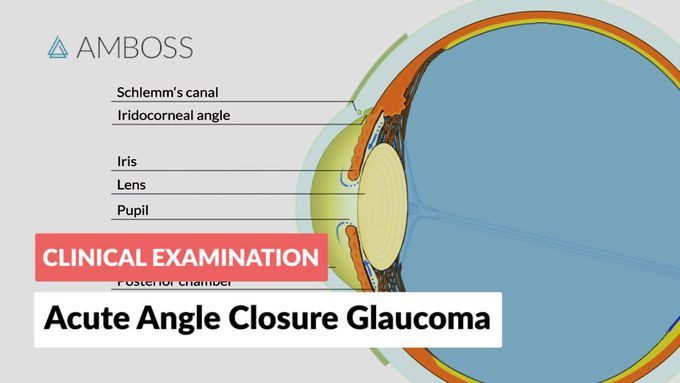


Acute Angle Closure Glaucoma
Acute angle-closure glaucoma is an ophthalmological emergency that is caused by a sudden increase in the intraocular pressure (IOP), typically due to an obstruction to aqueous outflow through the trabecular meshwork. This sudden rise in IOP results in the characteristic clinical features of an acutely painful, red eye that is rock-hard on palpation. Immediate medical therapy is required to prevent possible blindness. Miotics (e.g., timolol, apraclonidine), which open the iridocorneal junction, alone or in combination with drugs that decrease aqueous humor production (e.g., acetazolamide) are the first-line treatment. Once the acute attack is controlled, definitive therapy with surgery (e.g., iridotomy, iridectomy) is recommended to prevent recurrence.
Eye muscles and innervationEye innervationXerophthalmia
Acute Conjunctivitis (Pink Eye) | Allergic, Bacterial, Viral | Symptoms, Diagnosis, TreatmentWhat causes eye freckles? Are they dangerous?Strabismus: Everything You Need To KnowFATTY DEPOSITS of CHOLESTEROL around EYES | How to get rid of it?-Dr.Rajdeep Mysore|Doctors' CircleGlaucoma

